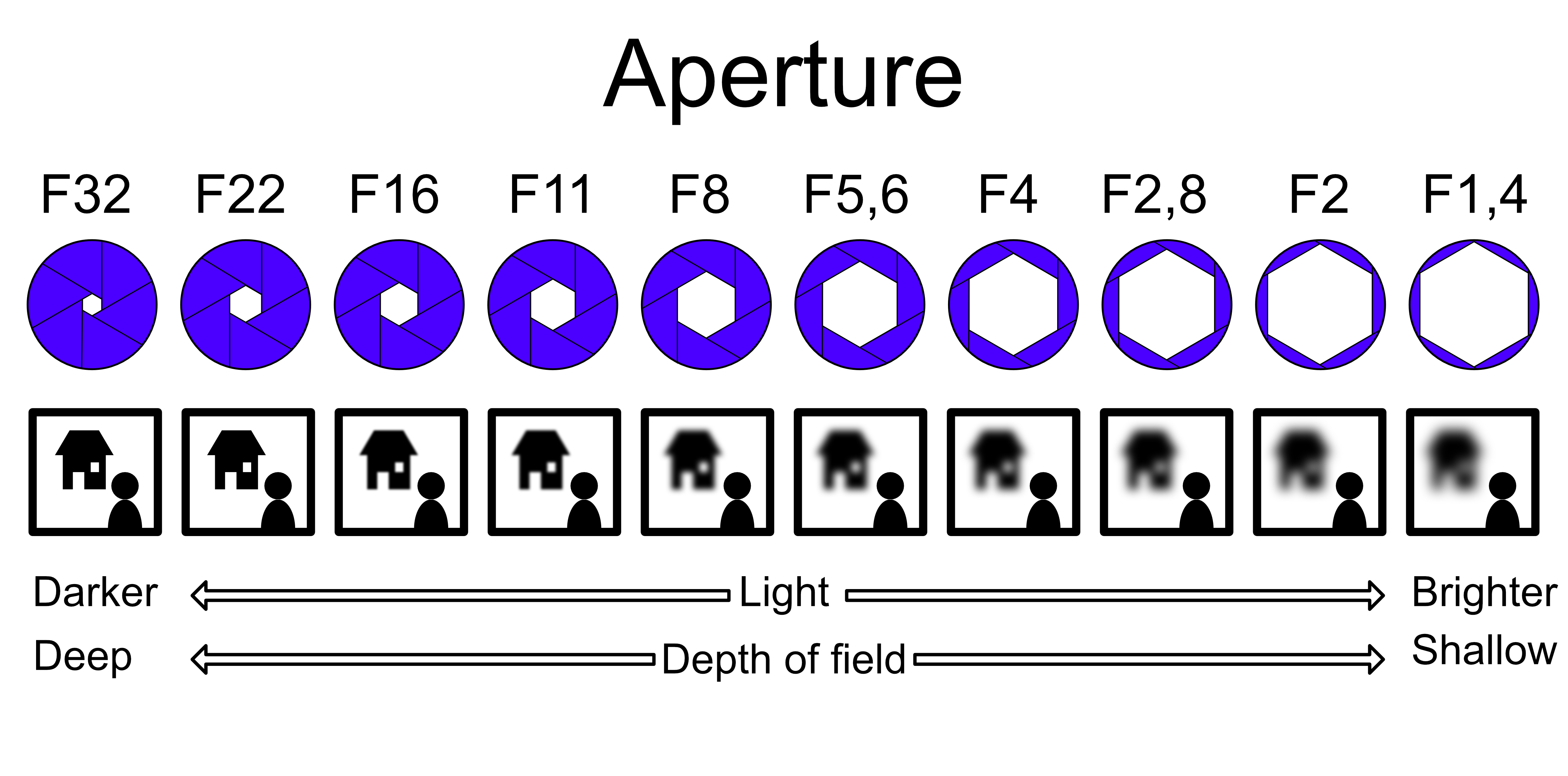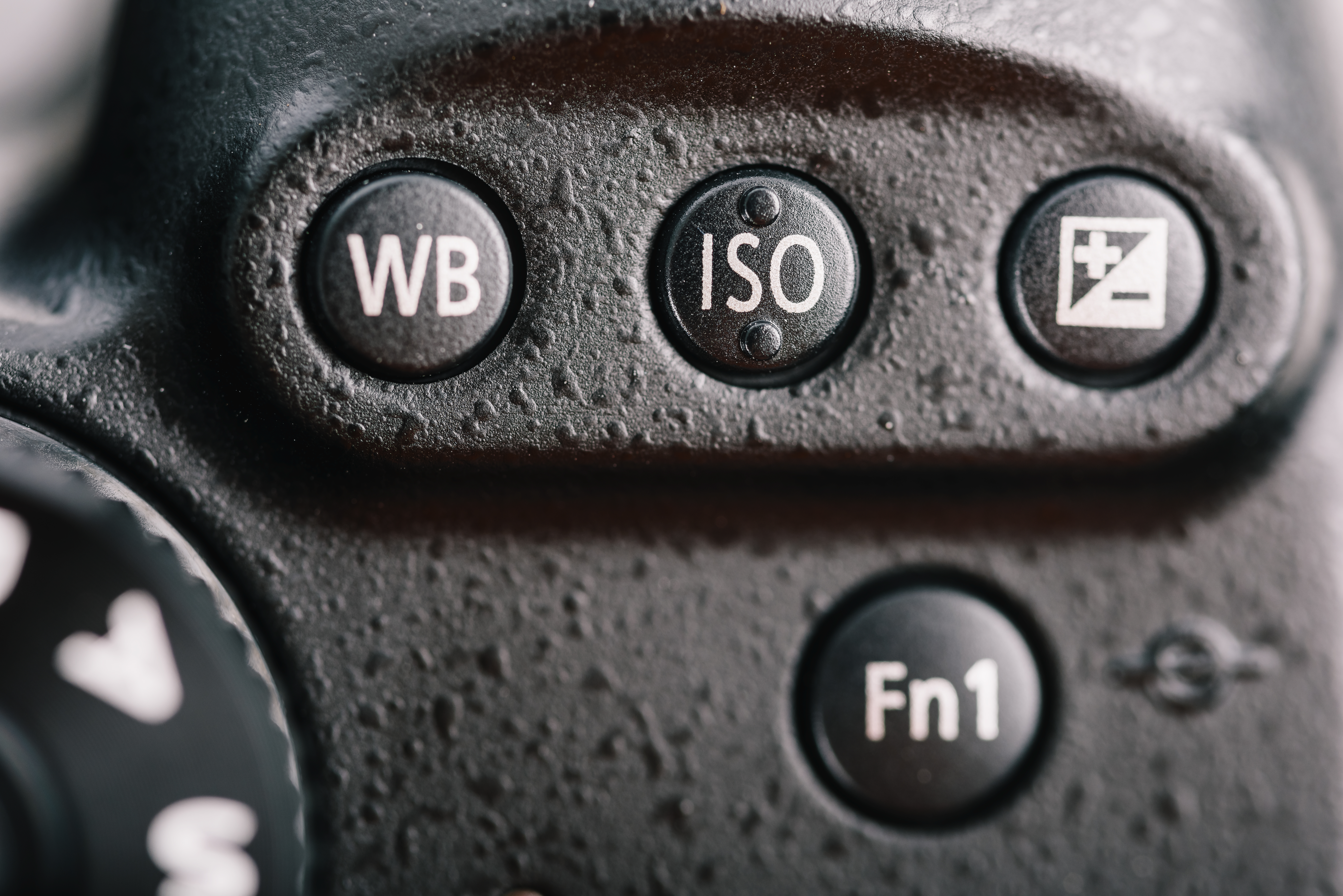Basic Camera Settings for Video and Beginner Filmmakers
Beginner Cameras
Beginner Photography
camera basics
Filmmaking
Tips & Advice
Tutorials
used cameras for beginners
used cameras for sale
used dslr cameras
Gear Focus
May 21, 2020

Oftentimes at Gear Focus we post about gear. It's almost as if its our...focus! Ha! Anyway, when we talk a lot about gear sometimes things get lost in translation. Using technical terms can be a bit overwhelming for those who don't know exactly what they mean. So to help with this, we decided that we would make a series of video basics to help those of you just getting started on your photo and video journey.
In the first episode of this series we talk about the building blocks for video. There are tons of settings in every camera but the three main settings are Aperture, Shutter Speed, and ISO.
 Depth of field refers to the range of what is in focus. A shallower DOF will have a smaller plane of focus, which is useful for separating your subject from the background. A lower aperture will give you a shallower DOF, giving you the blurry background look. Since these are video basics, it may be best to avoid the shallowest DOF for now. Once you've mastered your
Depth of field refers to the range of what is in focus. A shallower DOF will have a smaller plane of focus, which is useful for separating your subject from the background. A lower aperture will give you a shallower DOF, giving you the blurry background look. Since these are video basics, it may be best to avoid the shallowest DOF for now. Once you've mastered your
 Since these are video basics, you'll probably want to stick to the "cinematic standard." That would mean you want to your shutter speed to be double the frame rate. For example, if you are shooting 24 frames per second, you'll want to double the shutter speed to 1/48. Note: not all cameras have equal increments, so just get as close as possible.
Since these are video basics, you'll probably want to stick to the "cinematic standard." That would mean you want to your shutter speed to be double the frame rate. For example, if you are shooting 24 frames per second, you'll want to double the shutter speed to 1/48. Note: not all cameras have equal increments, so just get as close as possible.
 ISO is the same thing as gain. Your ISO will control how sensitive your camera's sensor is to light. So the lower the ISO number, the darker the image. However, if you turn the ISO up too high, you'll start to get a lot of noise in your image. Most cameras have a Native ISO, which is the ISO setting that gives the least amount of noise. This will also achieve the greatest dynamic range in your image. Note: the dynamic range is the contrast you see in the image. For example, the Phantom 4 Advance has a native ISO of 500, while the EOS R has a native ISO of 800.
Looking for a good starter camera to start your video or filmmaking hobby or career? Check out our selection of used cameras for sale on Gear Focus. From used mirrorless cameras to digital SLR cameras, you can find a great deal on a camera while saving money versus buying new.
ISO is the same thing as gain. Your ISO will control how sensitive your camera's sensor is to light. So the lower the ISO number, the darker the image. However, if you turn the ISO up too high, you'll start to get a lot of noise in your image. Most cameras have a Native ISO, which is the ISO setting that gives the least amount of noise. This will also achieve the greatest dynamic range in your image. Note: the dynamic range is the contrast you see in the image. For example, the Phantom 4 Advance has a native ISO of 500, while the EOS R has a native ISO of 800.
Looking for a good starter camera to start your video or filmmaking hobby or career? Check out our selection of used cameras for sale on Gear Focus. From used mirrorless cameras to digital SLR cameras, you can find a great deal on a camera while saving money versus buying new.
Video Basics
We wanted to break this down into three main categories for understanding how your camera works. The most important way that any camera operates is how it collects light. All filmmaking (and photography!) boils down to light. Visible light enters the camera and is captured by the sensor. The amount let in determines brightness/darkness. And settings on the camera even interpret the color temperature of the light to create warm and cool tones. The ways that your camera captures light that we are going to look at today are APERTURE, SHUTTER SPEED, and ISO. https://youtu.be/sWoRimT1xX8Aperture
The aperture (or iris) is the opening of the lens. This controls the amount of light coming into the camera's sensor. Your aperture is measured in F-Stops. The lower the number, the wider or more open the aperture is, which means more light is coming in. When you adjust the the aperture, you also affect the Depth of Field (DOF). Depth of field refers to the range of what is in focus. A shallower DOF will have a smaller plane of focus, which is useful for separating your subject from the background. A lower aperture will give you a shallower DOF, giving you the blurry background look. Since these are video basics, it may be best to avoid the shallowest DOF for now. Once you've mastered your
Depth of field refers to the range of what is in focus. A shallower DOF will have a smaller plane of focus, which is useful for separating your subject from the background. A lower aperture will give you a shallower DOF, giving you the blurry background look. Since these are video basics, it may be best to avoid the shallowest DOF for now. Once you've mastered your
Shutter Speed
Shutter speed controls how long the light hits the camera's sensor. Note: this is not to be confused with frame rate which controls how many images are captured per second. Your shutter speed will control the motion blur that you see on playback. A lower shutter speed, like 1/10 for example, will induce a lot of motion blur. A higher Shutter Speed will decrease the motion blur. If you don't have enough motion blur, things tend to look choppy. Since these are video basics, you'll probably want to stick to the "cinematic standard." That would mean you want to your shutter speed to be double the frame rate. For example, if you are shooting 24 frames per second, you'll want to double the shutter speed to 1/48. Note: not all cameras have equal increments, so just get as close as possible.
Since these are video basics, you'll probably want to stick to the "cinematic standard." That would mean you want to your shutter speed to be double the frame rate. For example, if you are shooting 24 frames per second, you'll want to double the shutter speed to 1/48. Note: not all cameras have equal increments, so just get as close as possible.
ISO
 ISO is the same thing as gain. Your ISO will control how sensitive your camera's sensor is to light. So the lower the ISO number, the darker the image. However, if you turn the ISO up too high, you'll start to get a lot of noise in your image. Most cameras have a Native ISO, which is the ISO setting that gives the least amount of noise. This will also achieve the greatest dynamic range in your image. Note: the dynamic range is the contrast you see in the image. For example, the Phantom 4 Advance has a native ISO of 500, while the EOS R has a native ISO of 800.
Looking for a good starter camera to start your video or filmmaking hobby or career? Check out our selection of used cameras for sale on Gear Focus. From used mirrorless cameras to digital SLR cameras, you can find a great deal on a camera while saving money versus buying new.
ISO is the same thing as gain. Your ISO will control how sensitive your camera's sensor is to light. So the lower the ISO number, the darker the image. However, if you turn the ISO up too high, you'll start to get a lot of noise in your image. Most cameras have a Native ISO, which is the ISO setting that gives the least amount of noise. This will also achieve the greatest dynamic range in your image. Note: the dynamic range is the contrast you see in the image. For example, the Phantom 4 Advance has a native ISO of 500, while the EOS R has a native ISO of 800.
Looking for a good starter camera to start your video or filmmaking hobby or career? Check out our selection of used cameras for sale on Gear Focus. From used mirrorless cameras to digital SLR cameras, you can find a great deal on a camera while saving money versus buying new.
Still Have Questions?
We're here to help! Let us know what questions you have about these topics or any other video basics. Have a topic you'd like to see explained next? Let us know below and it just might be our next topic in our video basics series. Gear Focus is dedicated to helping our community of creatives grow and thrive, so we want to help you get started on your path!Own one like this?
Make room for new gear in minutes.
Loading...
